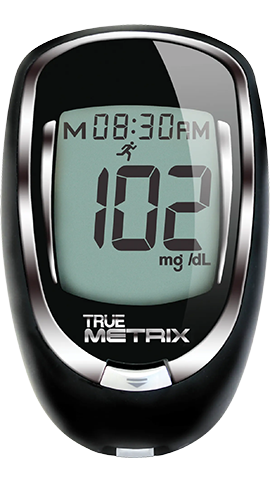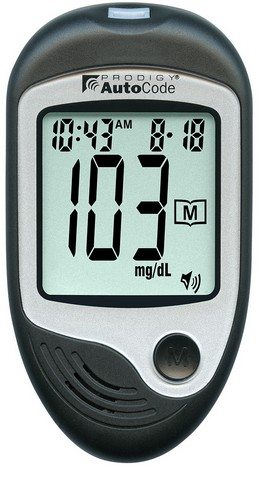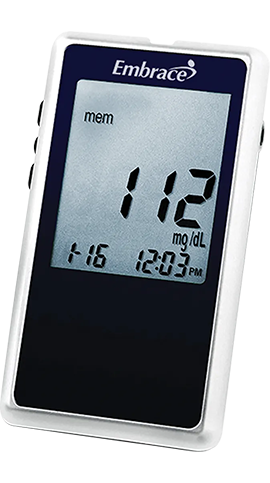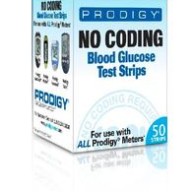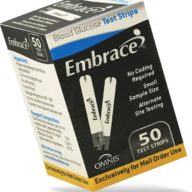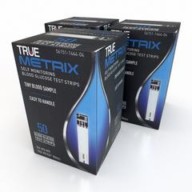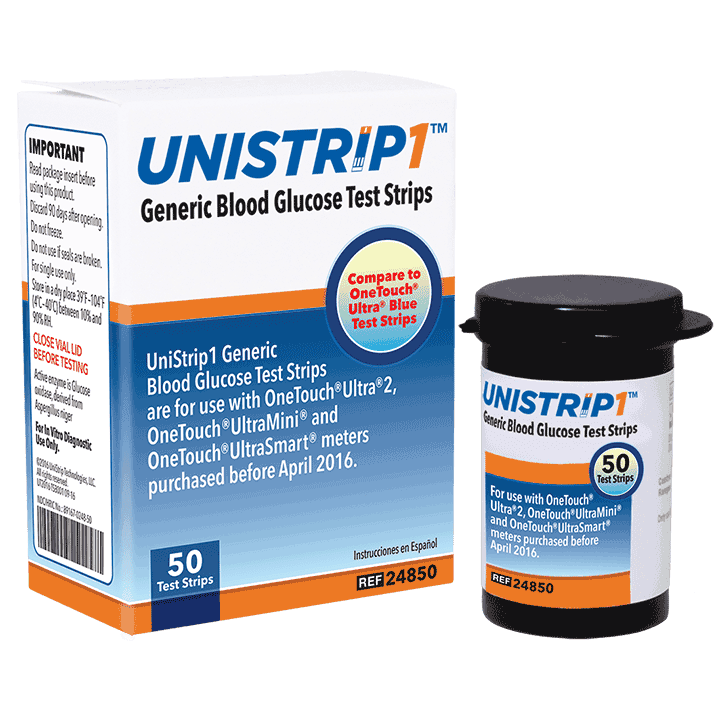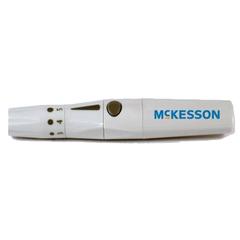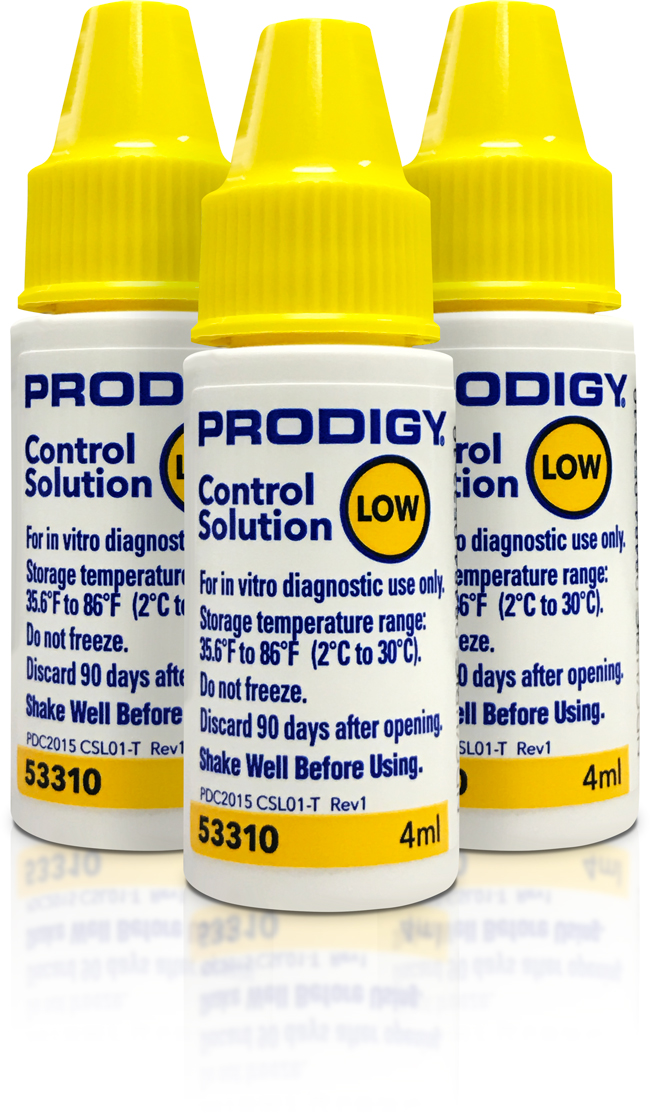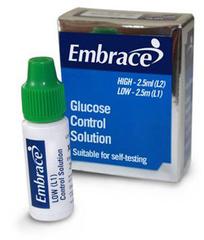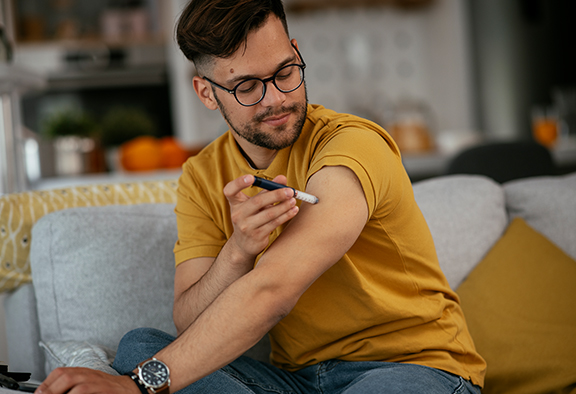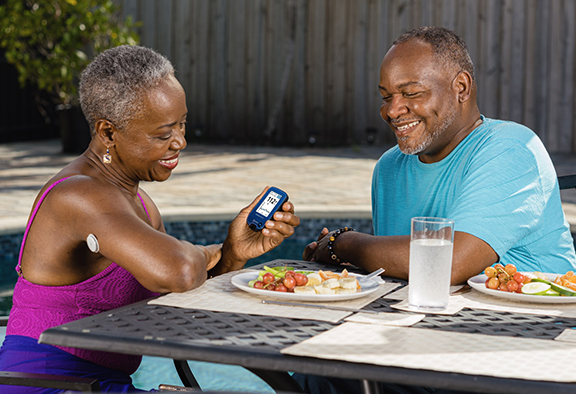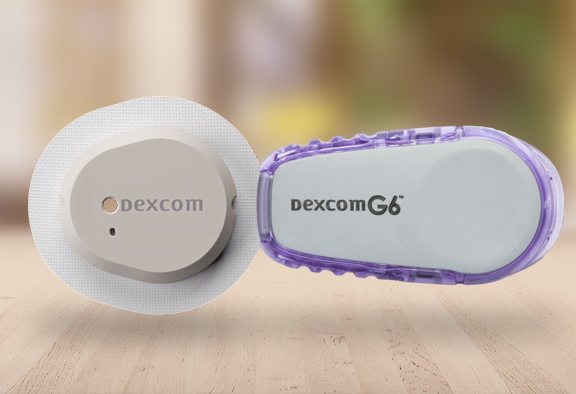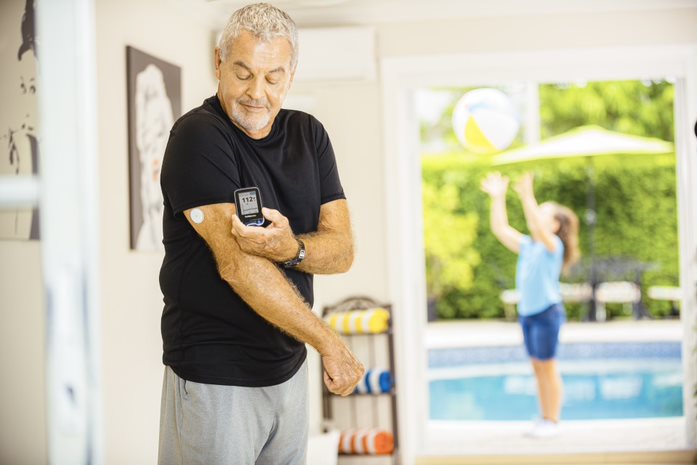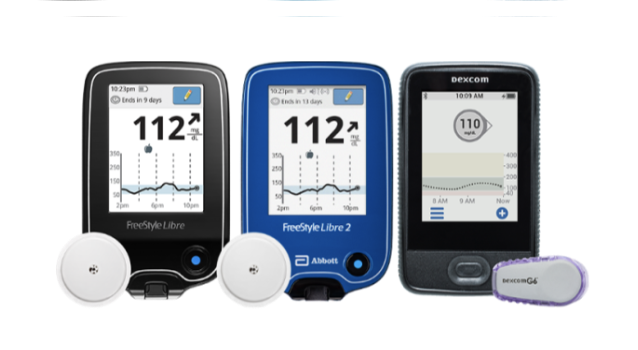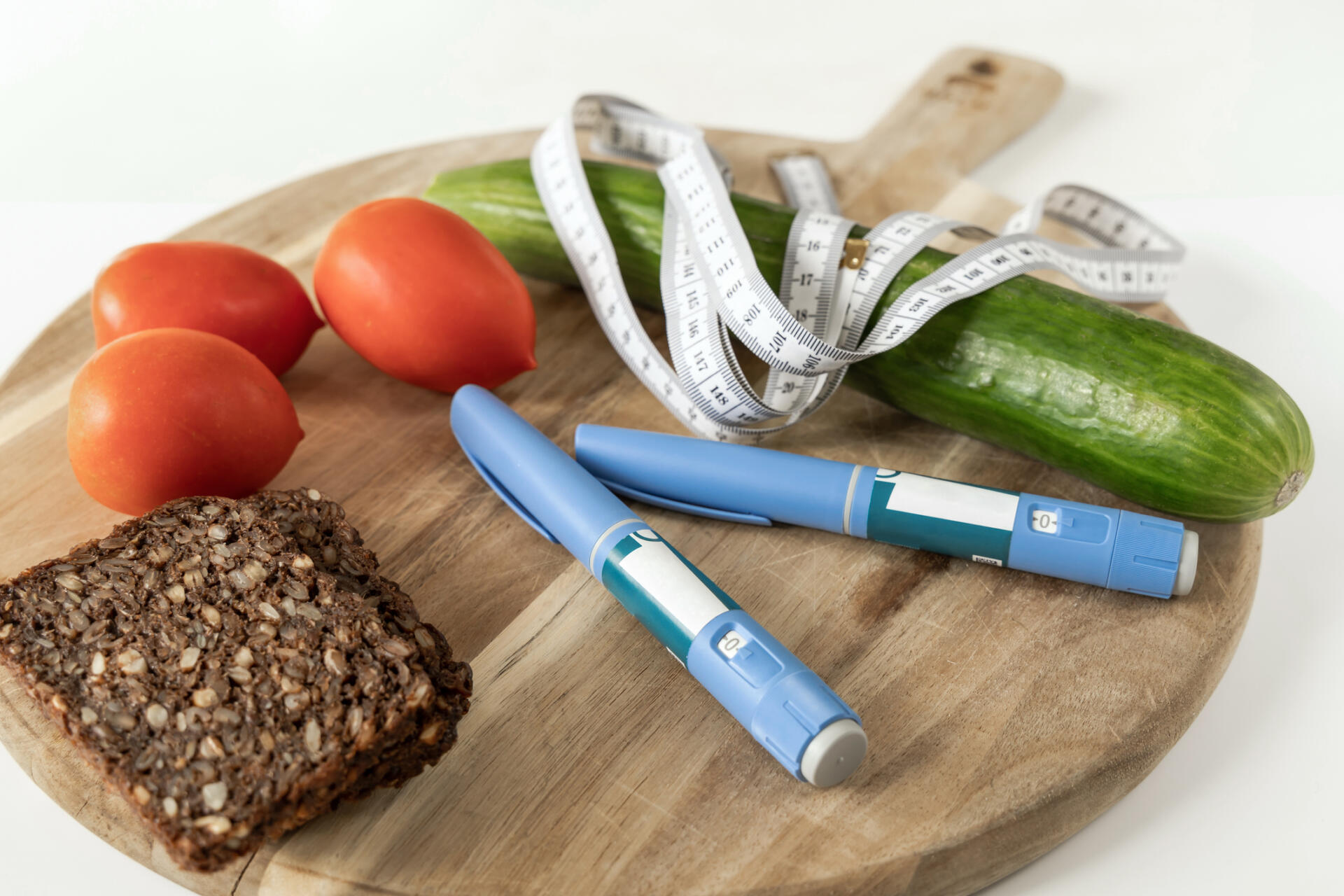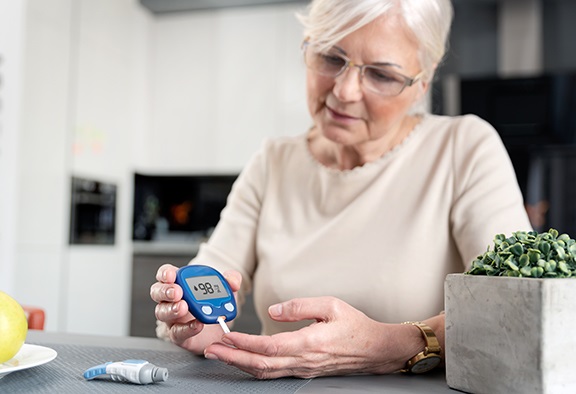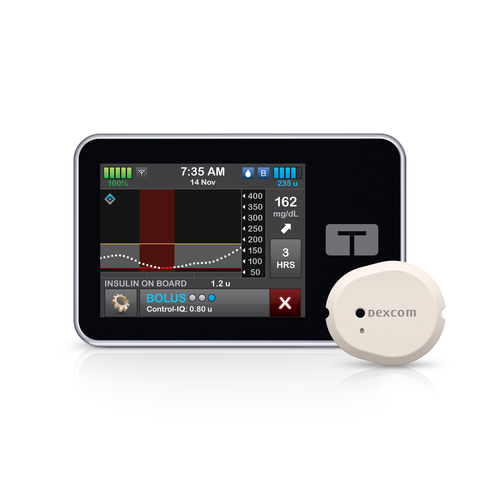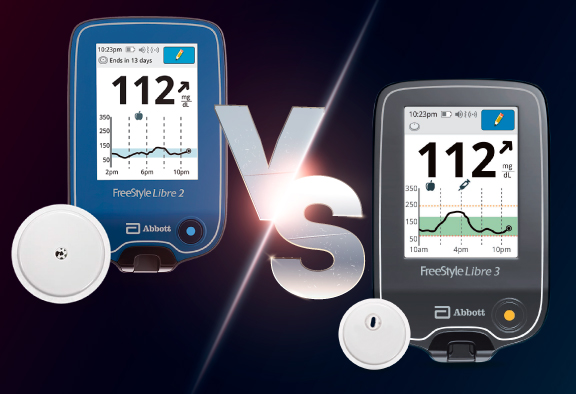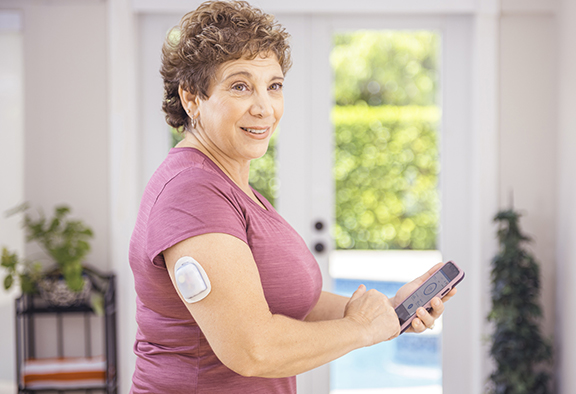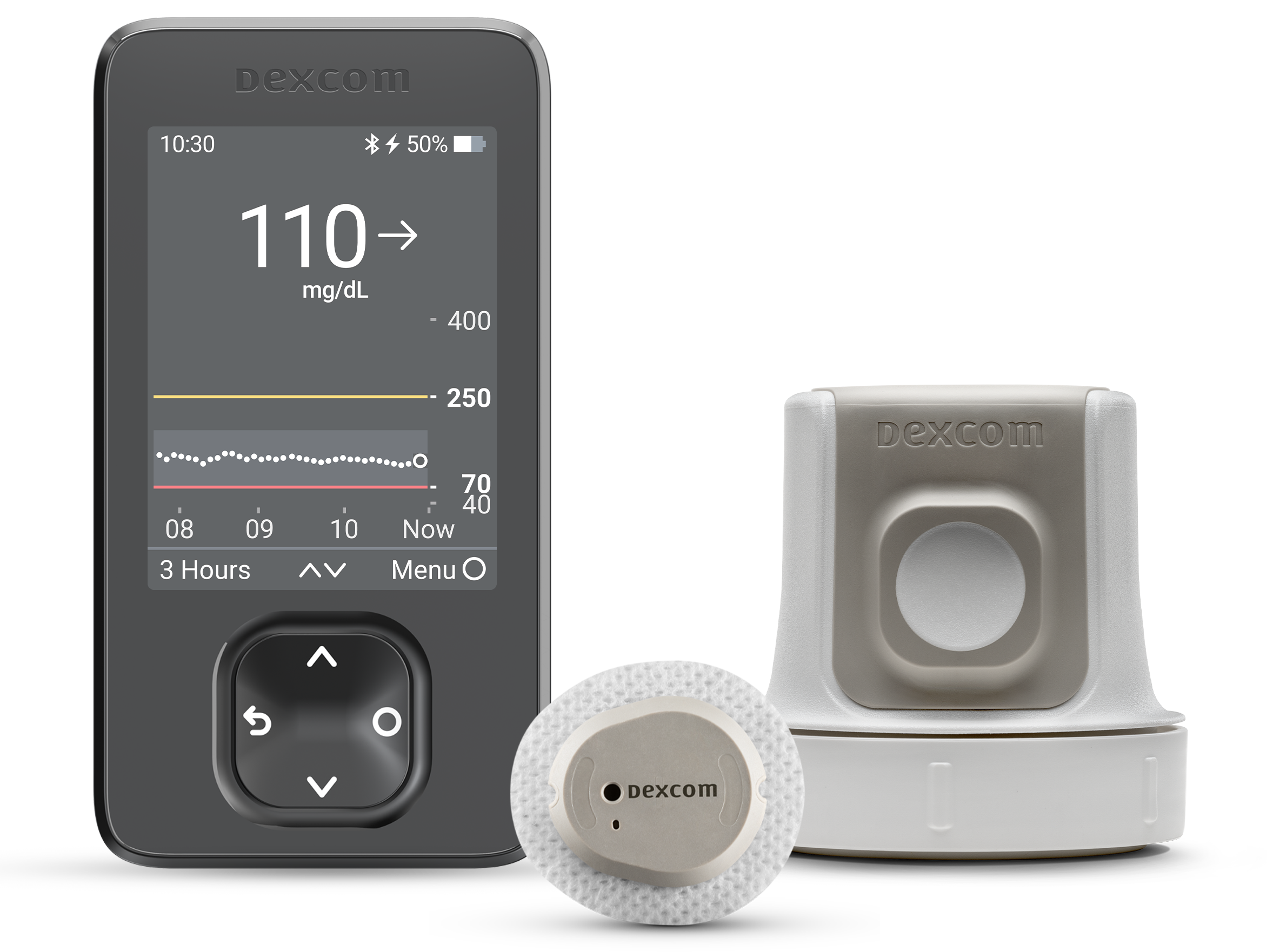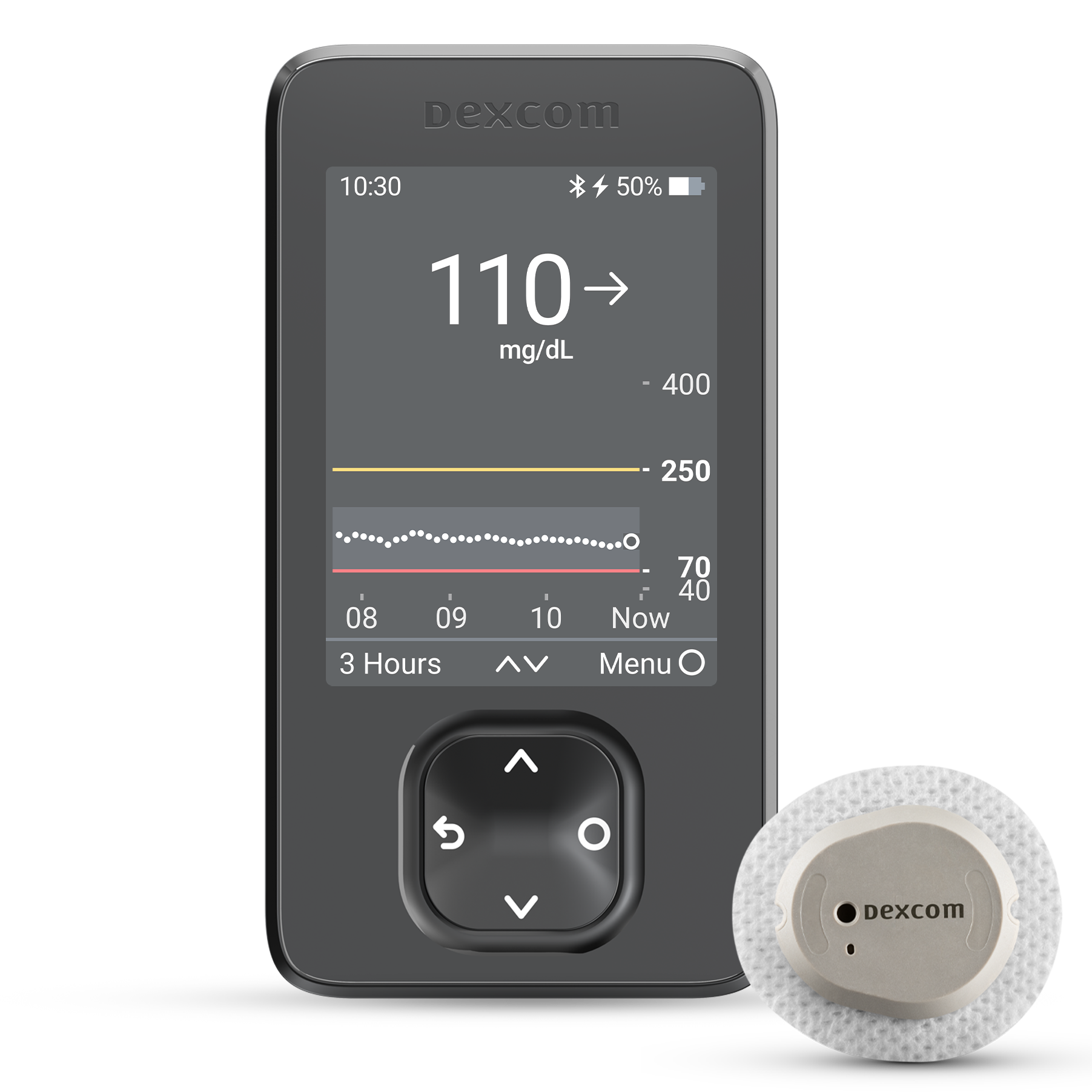Knowing your blood glucose levels is one of the most important parts of effectively managing diabetes. Get accurate readings quickly and easily with the proper diabetes testing supplies at US MED®. We offer a variety of blood glucose test strips, meters, lancets, control solutions, and more. With trusted brands and user-friendly options, we make it simple for you to track your blood sugar levels and take control of your health every day. We can bill your insurance or Medicare directly and manage the document collection process, saving you precious time. We also send you convenient reminders when it’s time to reorder, so you never have to worry about running out of supplies.
What Diabetes Testing Supplies Do I Need?
Today there are many ways to test blood glucose levels. Diabetic testing supplies may vary based on personal preference, doctor’s suggestions, and individual needs. However, there are basic supplies that any person living with diabetes needs for testing blood glucose levels. These include:
-
- Glucose meter: Small handheld device with a display screen that tests your blood glucose levels and provides a reading.
- Lancing device: Tool that includes a needle-like lancet that is typically spring loaded. It quickly and easily draws a small amount of blood via finger stick for the test sample.
- Test strips: Disposable strips that hold your blood sample and are inserted into the meter.
- Lancets: Small needle-like tools inside a lancing device that inject into the finger to draw the blood sample.
- Control solutions: Liquid substance designed to test the accuracy of a blood glucose meter.
These supplies are considered the basics for many people living with diabetes. There are more advanced options as well, like continuous glucose monitors, which are wearable devices that offer around-the-clock monitoring.
Glucose Meters
Lancets and Control Solutions
How to Test Blood Glucose Levels at Home
Most people haven’t tested their blood glucose levels until being diagnosed with diabetes. If you are new to home glucose testing, don’t worry. Your diabetes healthcare team will walk you through the self-testing process and advise you on how and when to test your blood glucose. That schedule includes tests every morning before breakfast at a minimum. It’s also common to test before other meals, at bedtime, and one to two hours after the start of a meal.
The testing process isn’t complicated once you get the hang of it. The basic steps are as follows:
- Puncture your fingertip with a lancet
- Put the resulting blood drop on a test strip
- Place the test strip in your glucose meter
- Wait for your blood glucose results to appear on the meter’s screen
Following these steps while sticking to your healthcare team’s recommended schedule helps you effectively manage your health, avoiding unnecessary highs and lows.
What is a glucose meter?
Traditional glucose meters are portable, battery-operated devices used to analyze your blood sugar levels. To use them, you’ll apply a blood sample to a test strip and place it in the meter’s slot. In no more than 15 seconds, your meter will give you a readout of your current blood glucose measurement. From there, you can make treatment decisions like adjusting your diet, getting physical activity, or changing your medication schedule.
There are many different glucose meters on the market today, all of which have unique features. Everything from minimum blood sample size to accuracy to visibility might affect your purchase decision, depending on your priorities. US MED® offers the highest quality blood glucose meters. We’re happy to help you find the best meter. For help choosing the right meter for your needs, give us a call.
How do test strips work?
All glucose meters use test strips. These small plastic strips have a chemical coating that powers the testing process by converting blood glucose to gluconic acid, creating an electrical current in the process.
Test strips aren’t reusable, so you’ll need to make sure you have a steady supply. At the same time, not all test strips are compatible with all meters. Check to ensure you’re ordering test strips that work with your device. If you’re unsure which test strips are compatible with your meter, we are happy to help.
What are control solutions for diabetes blood glucose testing?
A control solution is a liquid that is used to check the accuracy of your blood glucose meter. At times, you may have reason to question your glucose meter’s accuracy. In these situations, the best way to determine whether or not your device is functioning properly is by using a control solution.
Glucose meters measure a control solution the same way they measure a drop of blood. The control solution contains a predetermined amount of glucose so your result should fall into a known range. If your number is under or over that amount, your meter may be malfunctioning.
Like test strips, it’s crucial to ensure you use the correct control solution for your meter. US MED® offers multiple control solution brands and can help you choose the one that’s right for you.
Does Medicare cover diabetic testing supplies?
Medicare and Medicaid cover certain diabetic testing supplies. Medicare Part B covers diabetes testing supplies including, lancets, lancing devices, test strips, and monitors, and Medicaid covers most of these items as well. You can check your eligibility for diabetes supply reimbursements online if you are covered by either one. For other health insurance, 46 out of 50 U.S. states require insurers to cover diabetes supplies, medicine, and equipment. For a full breakdown of Medicare coverage, read our guide, Does Medicare Cover Diabetes Supplies?
Diabetes Testing Supplies Online
Did you know you can easily order diabetic testing supplies online and have them delivered to your door? At US MED®, it’s easy to get all the items you need quickly and conveniently. Once you select your products, you can enter your information online for a free benefits check to see what is covered by your insurance, ensuring you get the best price. Our helpful customer service team will assist you each step of the way if you have any questions. US MED members also enjoy free priority shipping.
Why Choose US MED for Your Diabetes Testing Supplies
US MED® is America’s top destination for diabetes testing supplies and other diabetes-related products. We provide countless benefits and conveniences to our customers. See some of the reasons why we are the number one provider below:
- FREE Priority Shipping on All Orders
- Automatic Reorder Reminders
- Direct Insurance Billing
- Provider for Medicare and 500+ Private Insurance Carriers
- 90 Days of Supplies with Each Order
- Top-Notch Customer Service
We also have an A+ Better Business Bureau rating and accreditations from the ACHC, URAC, and NABP. For questions about insurance coverage, diabetic testing supplies, or more, give us a call. We’re here to help!
FREQUENTLY ASKED QUESTIONS
While accuracy levels can vary from brand to brand, any commercially available glucose meter and testing strips will fall within 20 percent of ideal lab values.
You should test your blood sugar daily immediately upon waking up. That way, if your glucose levels are above abnormal, you can take steps to resolve it.
Yes, you may do so with a continuous glucose monitor (CGM). Popular CGMs available at US MED® include the Dexcom G7 and Freestyle Libre 3+ Sensor.
Yes. Home blood testing is a necessity for individuals living with diabetes. With a diabetic testing kit, you can easily and safely test blood sugar levels without a doctor.
An Apple Watch may be a helpful tool when paired with other diabetes tools to monitor blood sugar. For example, some continuous glucose monitors like the Dexcom G7 can communicate with an Apple Watch via app, so you can get alerts on your wrist.
Yes, when pairing your phone with a CGM from Dexcom or Abbott, you can get blood sugar updates on your smartphone.

Medical Review by Shirley DeLeon, Certified Diabetes Care and Education Specialist
Why Choose US MED®
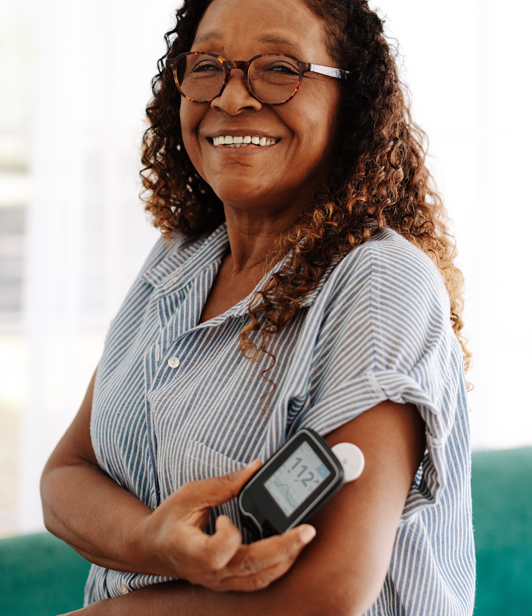

Currently a
US Med® Member?
If you're an existing member, the fastest and easiest way to reorder is by logging into the members portal, where you can also update your account.


Interested in Becoming a US MED® Member?
It's simple, fast and easy! Just complete a quick form or call 1-877-840-8218 now and let us take care of the rest.
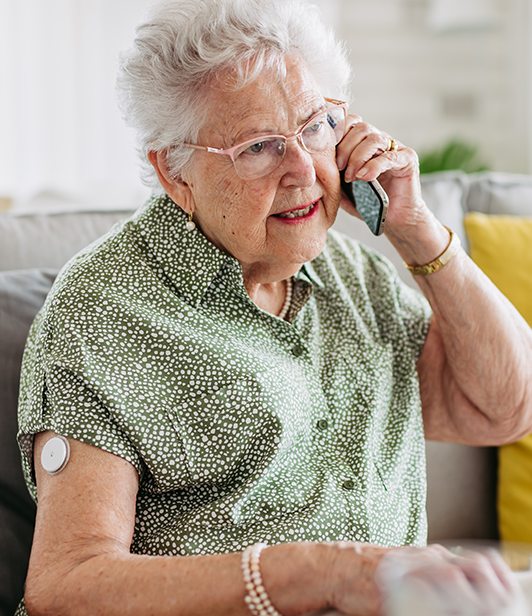

Prefer to reorder by phone?
No problem! Just call 866-723-6958 and our agents will walk you through the reorder process.


